Current Affairs (11th March 2021)
Dandi March
Context:
- Prime Minister will flag off a commemorative ‘Dandi March’ on 12 March 2021 to launch the celebrations of the 75th year of Independence.
History:
- The Dandi March or Salt March was part of Mahatma Gandhi’s non-violent protest against the British monopoly on production of salt.
- It was led by Gandhi, 78 people started the 24-day march on March 12 and reached Dandi on April 5, 1930.
- After making salt at Dandi, Gandhi headed to Dharasana Salt Works, 40 km south, but was arrested on May 5.
- It was a direct action campaign of tax resistance and nonviolent protest against the British salt monopoly in colonial India, and triggered the wider Civil Disobedience Movement.
- This was the most significant organised challenge to British authority since the Non-cooperation movement of 1920–22, and directly followed the Purna Swaraj declaration of independence by the Indian National Congress on 26 January 1930.
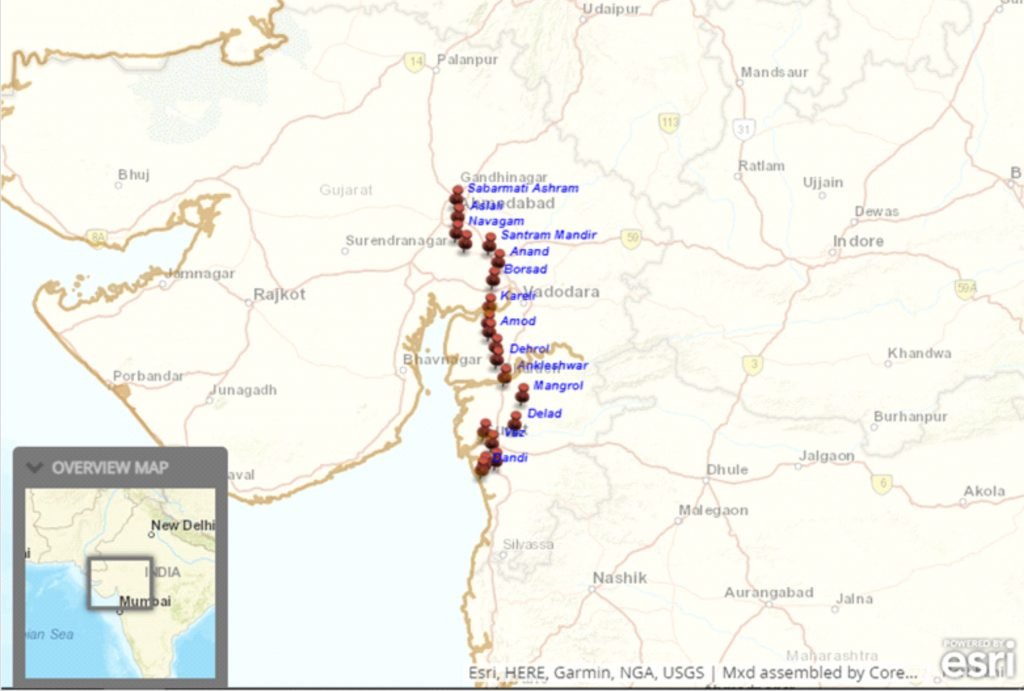
Kala-azar
Context:
- Seven new cases of Kala-azar or Visceral Leishmaniasis have been reported in the last one week in Bihar’s Muzaffarpur district, casting serious doubt on the state government’s efforts to eradicate the disease in the state by 2022.
About:
- Bihar has already missed the Kala-azar elimination target four times since 2010.The first deadline was 2010, under the National Health Programme, followed by 2015.
- It was later extended to 2017 and 2020 due to the government’s failure to eliminate Kala-azar.
Disease:
- The leishmaniases are a group of diseases caused by protozoan parasites from more than 20 Leishmania
- It is a neglected tropical disease affecting almost 100 countries including India.
- These parasites are transmitted to humans by the bites of the infected female phlebotomine sandfly – a tiny – only 2–3 mm long – insect vector. There are three main forms of leishmaniasis: cutaneous, visceral or kala-azar, and mucocutaneous.
- Kala-azar is characterized by irregular bouts of fever, substantial weight loss, swelling of the spleen and liver, and anaemia (which may be serious).
- If the disease is not treated, the fatality rate in developing countries can be as high as 100% within 2 years.
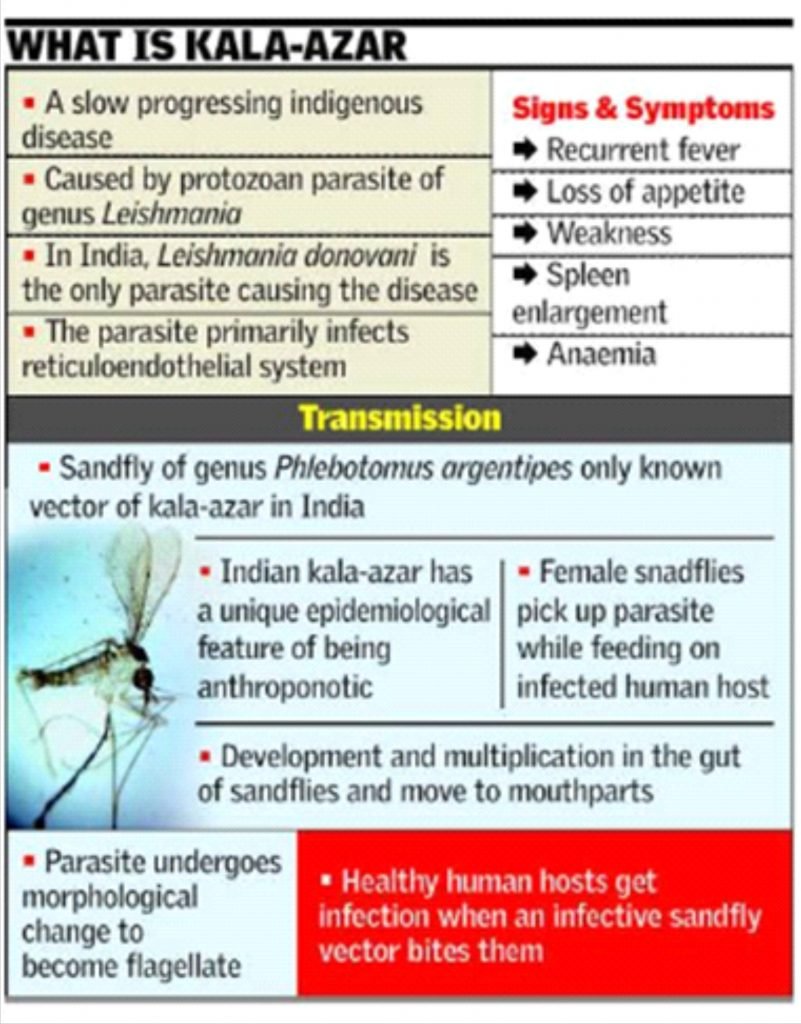
Summer and Winter duration
Context:
- Summers may last up to half-a-year while winters may get only two months of the year by the end of this century in the Northern Hemisphere. This is a possibility if humans continue to emit greenhouse gases (GHG) at the current rate, according to the research published in journal Geophysical Research Letters.
- It was carried out by scientists from various institutions of the Chinese Academy of Sciences.
About:
- Spring and autumn seasons will also become shorter.
- An extended summer season would mean large-scale changes in agricultural seasons and processes; behavioural changes in plants and animals; increase in heat waves, storms and wild fires
- A change is already around the corner. Farmers in the mountain states of India witnessed flowering in Rhododendron trees as early as January 2021, which is indicative of an early start to the summer season.
- These phenological changes can create a mismatch between animals and their food sources, disrupting ecological communities.
- It was difficult to conceptualise a 2-5 degree Celsius average temperature rise, but acknowledging that these changes can potentially force dramatic shifts in seasons has a much greater impact on how one perceives the impact of climate change.
Implications:
- Lengthier summers extend the amount of time vulnerable populations are subject to heat stress, increase cooling costs, and may lessen water availability in some areas.
- However, they may increase opportunities for warm weather recreation.
- Shorter winters reduce winter recreational opportunities such as skiing and ice fishing and prematurely deplete snow and ice needed for the spring and summer water supply in some areas.
- They also potentially expand the wildfire season and increase the prevalence of pests harmful to forestry and agriculture. But they decrease heating costs and limit the duration of dangerously low temperatures.
Raising FDI limit
Context:
- Recently, the Union Cabinet has approved a proposal to amend the Insurance Act, 1938, paving the way for increasing the foreign direct investment (FDI) limit in the sector to 74 per cent from 49 per cent.
About:
- A Bill to amend the Act is likely to be introduced in the ongoing Budget session of Parliament itself.
- It was in 2015 when the government hiked the FDI cap in the insurance sector from 26% to 49%.
- The government has earlier allowed 100% foreign direct investment in insurance intermediaries.
- Intermediary services include insurance brokers, reinsurance brokers, insurance consultants, corporate agents, third party administrators, surveyors and loss assessors.
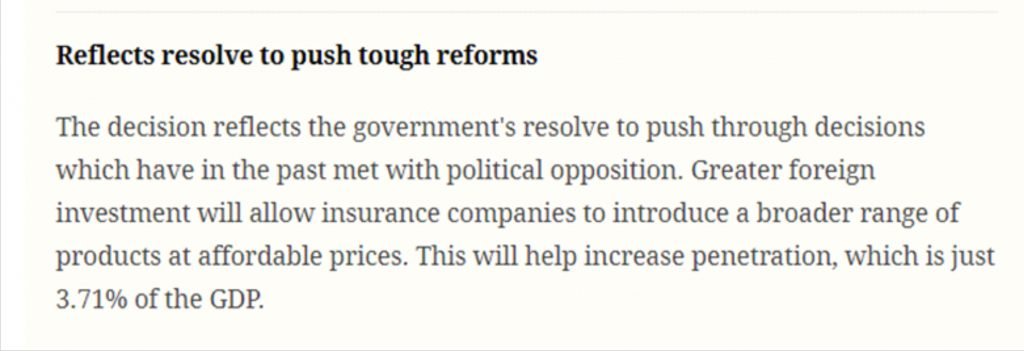
Impact:
- Raising the foreign investment limit in the insurance sector is expected to improve capital availability and foster competition in the sector.
- The FDI limit hike will also develop the insurance industry as a big channel for generating durable funds for creation of long-term assets and aid the process of economic development as India emerges out of the pandemic.
- The move is set to benefit the industry as it will help grow the market with a broader range of products at affordable prices.
- Insurance penetration currently stands at just 3.71 per cent of the GDP in the country. Higher investments will help increase penetration of products in an underserved market. It will also bring in global best practices, besides helping lower the cost of products due to greater competition.
PM Swasthya Suraksha Nidhi
Context:
- The Union Cabinet approved the Pradhan Mantri Swasthya Suraksha Nidhi (PMSSN) as a single non-lapsable reserve fund for share of Health from the proceeds of Health and Education Cess levied under Finance Act, 2007.
About:
- The major benefit of PMSSN will be enhanced access to universal and affordable health care through availability of earmarked resources, while ensuring that the amount does not lapse at the end of financial year.
- PMSSN is a non-lapsable reserve fund for Health in the Public Account and Proceeds of share of health in the Health and Education Cess will be credited into it.
- The accruals into the PMSSN will be utilized for the flagship schemes of the Ministry of Health and Family Welfare namely- Ayushman Bharat – Pradhan Mantri Jan Arogya Yojana, Ayushman Bharat – Health and Wellness Centres, National Health Mission and Pradhan Mantri Swasthya Suraksha Yojana.
- It also includes, emergency and disaster preparedness and responses during health emergencies and any future programme and scheme that targets to achieve progress towards Sustainable Development Goals and the targets set out in the National Health Policy 2017.
- The administration and maintenance of the PMSSN is entrusted to the Health Ministry and in any financial year, the expenditure on such schemes would be initially incurred from the PMSSN and thereafter from Gross Budgetary Support.
Lack of jobs
Context:
- The median age of the Indian population— the age that divides the population into two equal halves — was 28.4 in 2020. While this created the image of a “younger” population and a productive workforce, the grim side is their expectations of the state — especially access to quality education, and job opportunities.
Findings of Youth Study 2016:
- One-fifth (19%) of the youth identified jobs as the topmost concern.
- In varying degrees, almost nine in ten (85%) in the Youth Study 2016 reported being worried about their jobs or occupations. While half the respondents claimed to be worrying quite a lot, one in four reported being somewhat worried.

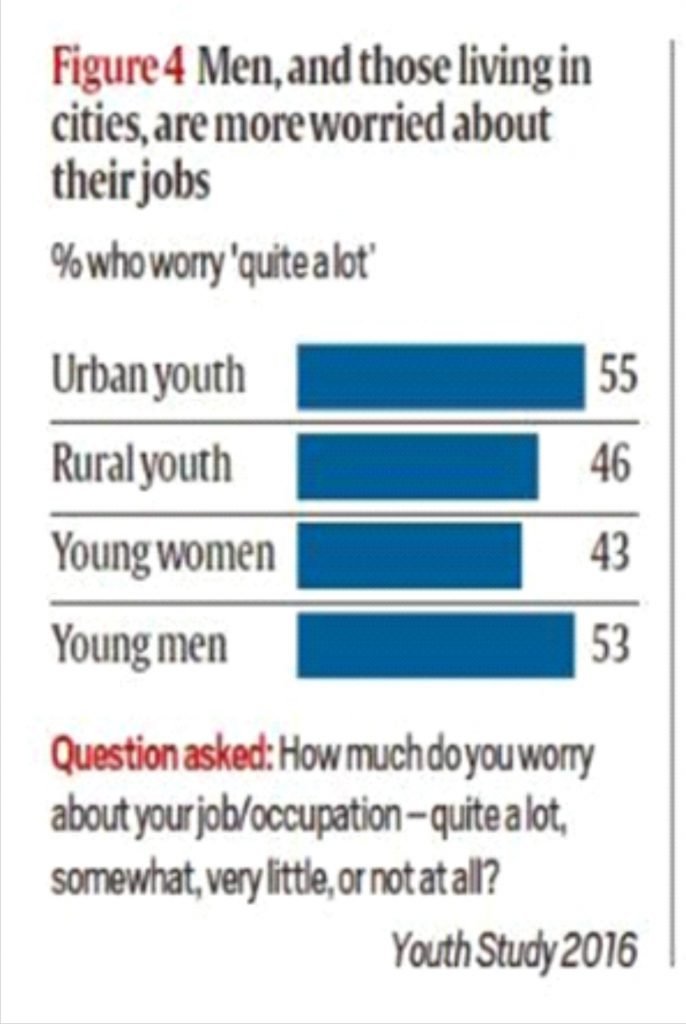
NES Pre-poll 2019:
- An even higher proportion — 25% — of young Indians reported jobs as the most important issue while voting in the LokSabha elections.
- This proportion was higher in the central (29%) and northern (34%) parts of the country, mostly comprising Hindi-speaking states, than in the south (16%). The states of Delhi (50%), Telangana (40%), Haryana (39%) and Punjab (36%) stood out.
- First, asked if employment opportunities had increased or decreased during the last 5 years of NDA rule at the Centre, 45% said they had decreased, and 28% said they had increased. Second, asked if it had become more difficult or less difficult to find a new job during the last 3-4 years, half (49%) said it had become even more difficult.

- The picture was quite similar across villages (49%), towns (49%), and cities (51%), indicating this was a major concern throughout India. This points to a dismal state of employment in India, with the unemployment rate rising further due to Covid-19 and the lockdown.
Government jobs, private jobs, or their own business/profession?
- While the state may not have enough jobs, more and more youngsters are preparing for government exams.
- Having a disproportionate young population means the Indian economy must support this section, which demands quality education and is not yet ready to work. Simultaneously, it must create jobs for those prepared to join the workforce. In the absence of jobs, some of these students would have no other option but to continue their studies for a few more years.
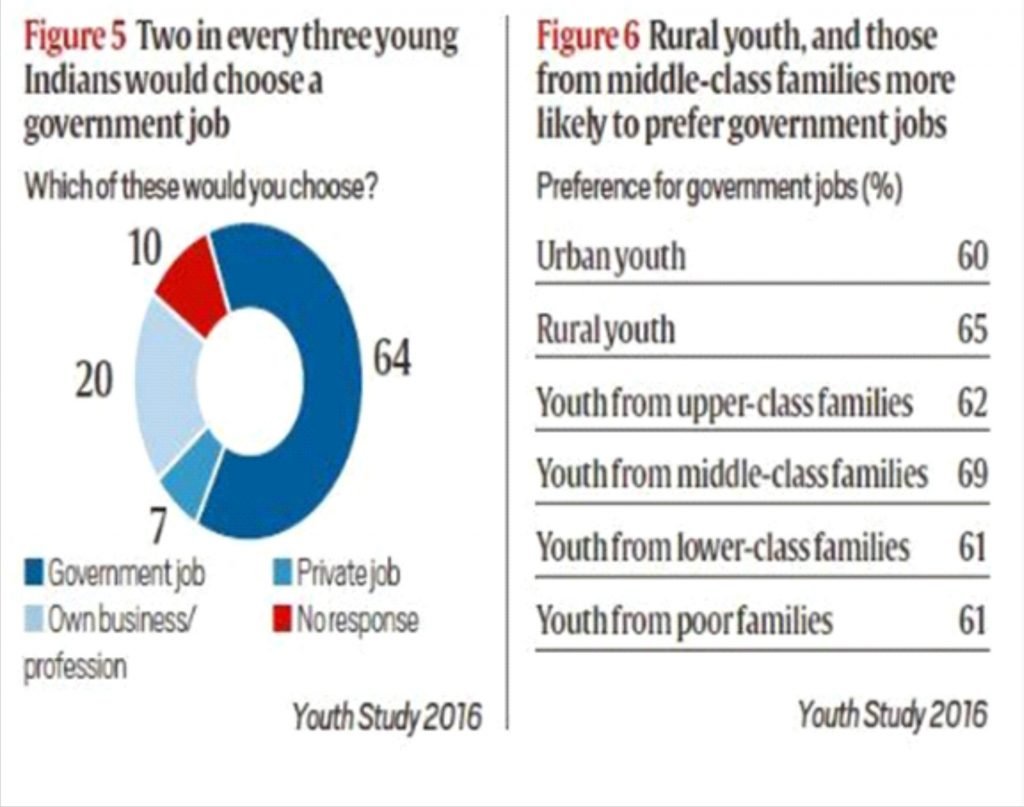
Way ahead:
- The median age in India is projected to increase to 38 by 2050, close to where more developed countries stand today.
- This is the time when the state needs to maximise its efforts, ensuring the Indian youth develop the necessary skills and then providing them with a stage to explore their potential.

